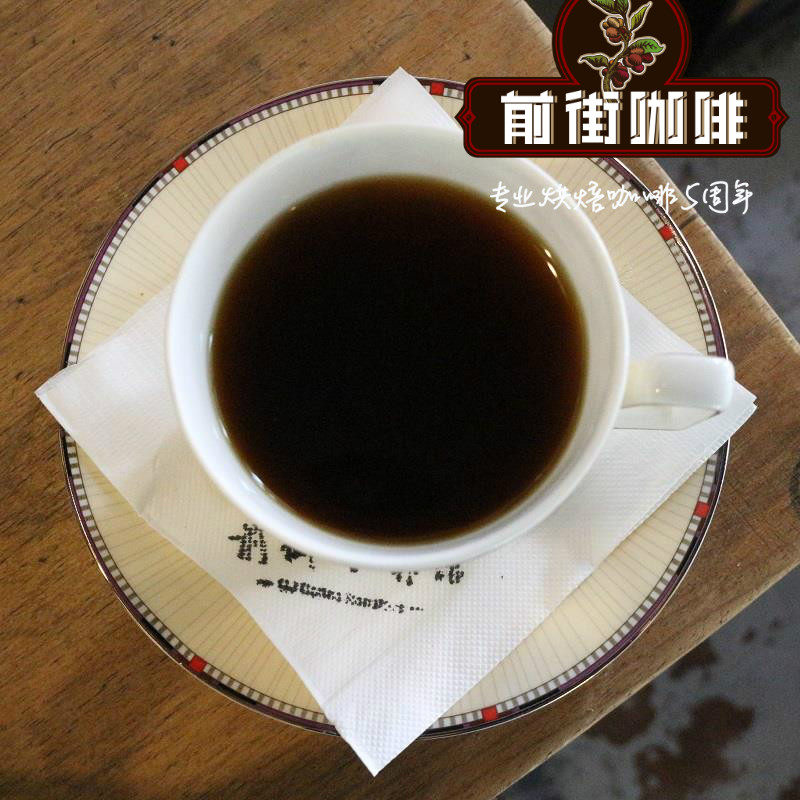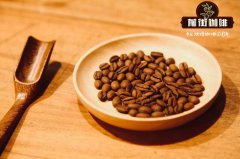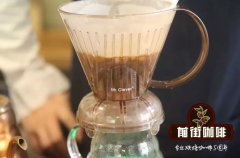BESO DE ANGEL COFFEE Introduction Panama Poquete Coffee Flavors

Professional coffee knowledge exchange more coffee bean information please follow the coffee workshop (Wechat official account cafe_style)
Official coffee production in Panama, which began in the early 20th century, is grown in the westernmost valleys and mountains of the country, dominated by mild-tasting Arabica beans, producing 82% of Arabica and 18% of Robusta varieties, respectively. The Chiriqui Plateau, grown at 2300-3500 feet (700-1070 m) above sea level, is considered to be the highest quality Arabica coffee in Panama, with the most famous boutique coffee in Boquete and Volcan producing areas because of its high rating in the international market and price records.
It is said that the coffee grown in this area has a rich taste, charming aroma, rich fruit tone and mild acidity. This may be due to the fact that almost all coffee trees in the area grow under shade trees and use the best sunbathing on the scaffolding as a traditional way of handling raw beans. It is also very important that the farms in this area are processed by hand and machines are used only in the wet grinding process. As a result, in seed preservation, farming techniques and peeling methods, generations of traditions have been preserved and modern advanced technologies have been combined.
According to FAO statistics in 2013, the production of Panamanian coffee was 10100 tons, accounting for about 0.1 per cent of global production, with a planting area of 22400 hectares. From 1966 to 2005, coffee production statistics showed that production increased from less than 402 tons in 1961 to 1422 tons in 1985, but fell to 510 tons in 2014.
Coffee trees and crops in Panama are eventually affected by natural pests in other coffee-producing countries. In recent years, the pests that have seriously affected the cultivation of coffee farms on 20097 hectares of land are iron rust, Ojo de Gallo and beetles.
Although Panama is a small coffee producer, its coffee is characterized by its ideal production environment, such as high altitude, volcanic soil, balance of water and sunlight caused by tropical plateau climate, and many microclimates, which have created many unique coffee flavors and tastes. Because coffee trees grow at high altitudes (starting from 1.400 mts), low temperatures and slow growth rates Brewing a complete taste and aroma development.
Angel Kiss BESO DE ANGEL is planted in Chiriqui, Panama. The height of Haiba is 1500-1800 meters. With pure Panamanian Geisha species and African bed, the peeled berries will be peeled for natural drying in sunny and Atlantic and Pacific whirling breezes. Angel kiss BESO DE ANGEL tastes like a gentle breeze, full of unrestrained aroma, it tastes like a typical Panamanian Geisha full of warm orange aroma, because honey treatment makes the flavor super sweet, ripe into the sweetness of a peach, and the whole is like exquisite fruit and herbal tea. The tail rhyme is a long-lasting perfume and tea flavor.
Product name: Angel Kiss BESO DE ANGEL
Zone: Chiriqui, Panama
Hai Postscript: 1500-1800m
Variety: Panama Geisha
Treatment method: Honey honey treatment
Cup test flavor: strong floral notes, sweet peaches, grapes, strawberries, herbal tea, soft taste, tail fragrance, Earl tea notes, fruit aromas
Panamanian coffee dates back to 1780, when European immigrants launched the first batch of Typica coffee.
The good natural conditions in Central America, such as ample sunshine, soil and altitude, not to mention the supply of labour, make the region one of the ideal places to grow high-quality, fine coffee. The geisha coffee produced in Panama has begun to lead the world trend of specialty coffee and has successfully attracted the attention of coffee lovers all over the world.
The Boquete region is the oldest and most famous coffee producing area in Panama. Located on the east side of the Baru volcano, the elevation is between 1000 and 2000 meters, in which Volcan Baru National Park is an ecological reserve with rich biodiversity and seven kinds of microclimate. With haze and abundant rainfall throughout the year, the area has become a favorable growing environment and the Boquete coffee produced here has a unique aroma. The region has become a major producer of the finest Panamanian coffee. During the harvest season, coffee farmers will use washing and natural methods to treat the coffee and dry it in the sun to ensure that the raw coffee beans are rich and full of flavor. The region has become a major producer of the finest Panamanian coffee.
During the harvest season, coffee farmers will use washing and natural methods to treat the coffee and dry it in the sun to ensure that the raw coffee beans are rich and full of flavor.
END
Important Notice :
前街咖啡 FrontStreet Coffee has moved to new addredd:
FrontStreet Coffee Address: 315,Donghua East Road,GuangZhou
Tel:020 38364473
- Prev

Hope Manor Rose Summer Variety GEISHA in Rose Summer Huilan producing area of Colombia
Professional coffee knowledge to Columbia Huilan flow more coffee bean information please follow the coffee workshop (Wechat official account cafe_style) the Columbia Huilan province is located in the Andes Mountains in western Colombia, where the narrow canyon coffee grows on the slopes here, and this is also a well-known Colombian coffee producing area, La Esperanza.
- Next

El Salvador Chivas Manor Coffee characteristics Story how El Salvador coffee beans are brewed?
Professional coffee knowledge exchange more coffee bean information please follow the coffee workshop (Wechat official account cafe_style) unique, mild taste of coffee. El Salvador is one of the small countries in Central America with a dense population. The flavor of its coffee is characterized by excellent balance. Today, this coffee accounts for 40% of the country's exports. The coffee with the best texture is 1.
Related
- Does Rose Summer choose Blue, Green or Red? Detailed explanation of Rose Summer Coffee plots and Classification in Panamanian Jade Manor
- What is the difference between the origin, producing area, processing plant, cooperative and manor of coffee beans?
- How fine does the espresso powder fit? how to grind the espresso?
- Sca coffee roasting degree color card coffee roasting degree 8 roasting color values what do you mean?
- The practice of lattes: how to make lattes at home
- Introduction to Indonesian Fine Coffee beans-- Java Coffee producing area of Indonesian Arabica Coffee
- How much will the flavor of light and medium roasted rose summer be expressed? What baking level is rose summer suitable for?
- Introduction to the characteristics of washing, sun-drying or wet-planing coffee commonly used in Mantenin, Indonesia
- Price characteristics of Arabica Coffee Bean Starbucks introduction to Manning Coffee Bean Taste producing area Variety Manor
- What is the authentic Yega flavor? What are the flavor characteristics of the really excellent Yejasuffi coffee beans?

